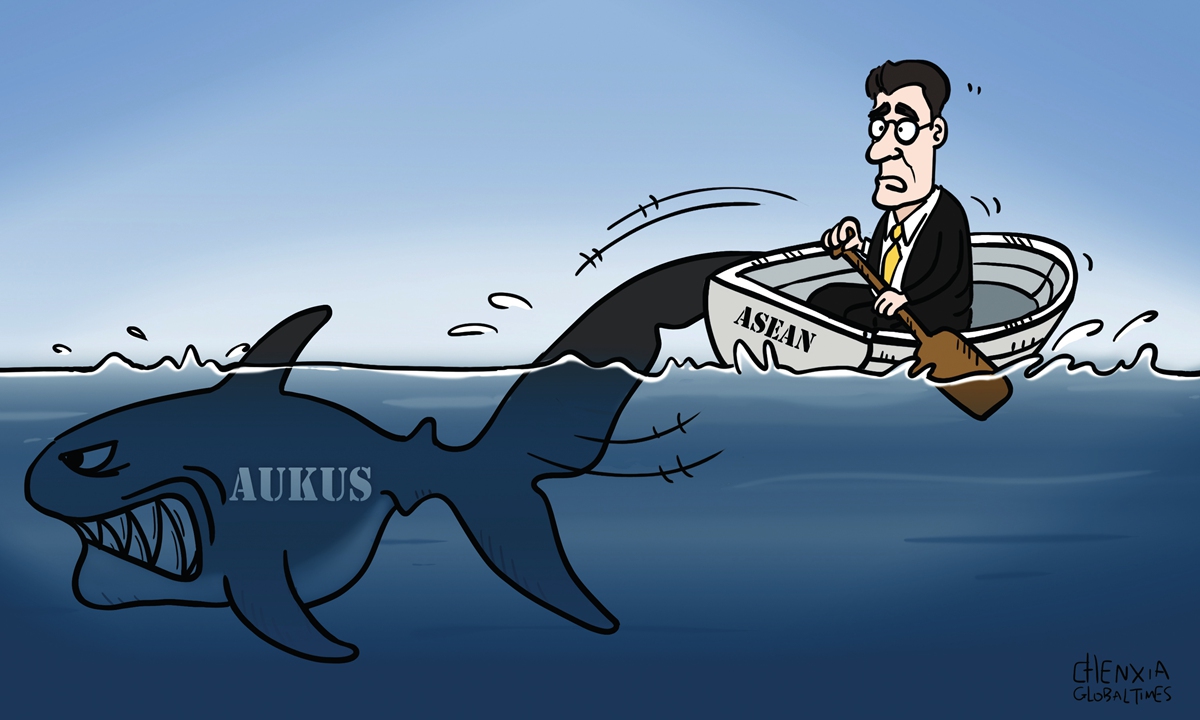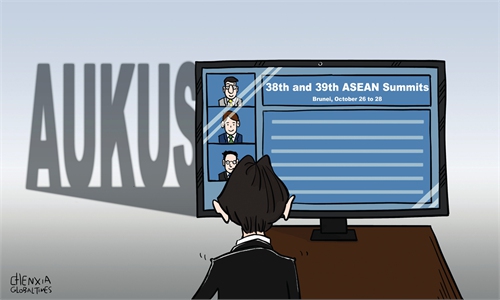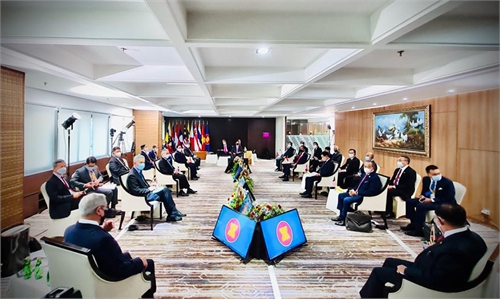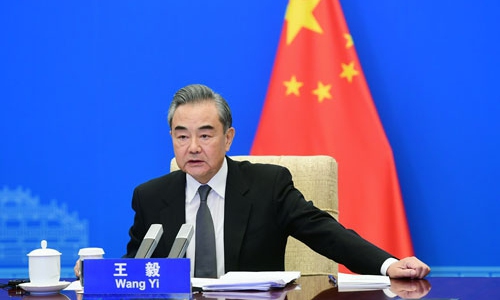
Illustration: Chen Xia/GT
The Association of Southeast Asian Nations (ASEAN) and Australia agreed on Wednesday to establish a "comprehensive strategic partnership," which has been hailed by Australian media as part of Canberra's bid to expand influence in the region. The move came at a time when the US and its allies have been wooing ASEAN in an attempt to pit the bloc against China.
During Wednesday's summit, Australian Prime Minister Scott Morrison announced a $154 million package to fund several projects across Southeast Asia, Australia's ABC reported. While Australia has been hyping up the importance it attaches to ASEAN, the size of the funding package is surprisingly small, especially compared with the tens of billions of dollars Australia is willing to pay for the AUKUS nuclear submarine deal.
The contrast reveals that what Canberra really wants behind its strengthened ties with ASEAN is not win-win economic cooperation with the region, but geopolitical objectives. Australia's halfhearted and ill-intended offering may disappoint some in ASEAN, especially those hoping for upgraded trade cooperation, increased investment activity and funding for infrastructure projects.
For ASEAN, economic cooperation is the top priority. Getting involved in unnecessary geopolitical backbiting will not only be damaging to regional economies, but will also undermine peace and stability, which is the most important prerequisite for shared economic development of the entire region.
While the US and its allies at different occasions have been trying to hint at "concerns" triggered by China's behavior, it is the AUKUS nuclear submarine deal that actually upset ASEAN leaders. Many view the trilateral security pact as having the potential to pose a real threat to regional peace and stability by fueling an arms race and ramping up tensions.
Over the years, Australia has been seeking closer ties with ASEAN, and economic and trade cooperation is a key component of its efforts. Yet, the results have been far from satisfying both in terms of their trade volume and certain projects' progress. For instance, in March 2018, Australia and ASEAN agreed to establish a pipeline to support high-quality infrastructure projects in the region, which as of today has failed to produce a single project.
Moreover, it would be delusional for Canberra to believe deepening economic and trade cooperation with ASEAN members could counter China's cooperation with the bloc. The supply chain between China and ASEAN has been growing stronger and stronger over recent years, with the ASEAN becoming China's largest trading partner with a total trading volume of 4.74 trillion yuan ($742.8 billion) in 2020.
In the foreseeable future, supply chains between China and the ASEAN will only be strengthened. Close cooperation over the supply chains between China and ASEAN is bound to turn the region into a global manufacturing hub, fueling the rise of the region as a whole. According to ISEAS-Yusof Ishak Institute's "State of Southeast Asia: 2021 Survey Report," 49 percent of Southeast Asian elites view China as the region's most influential political and strategic power compared to only 30 percent viewing the US as the region's main power, a marked shift from a decade ago.
Against growing ties between China and ASEAN, Australia would be wise to seize the unprecedented opportunity and join the cooperation, instead of being a troublemaker standing in the way of cooperation. If Australia cannot face up to the reality and prove its value of meeting the economic needs of ASEAN member states, it will end up being cut out of the regional supply chain.



